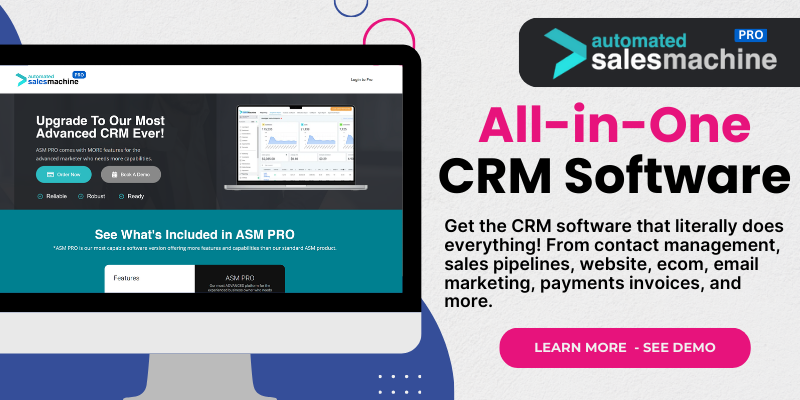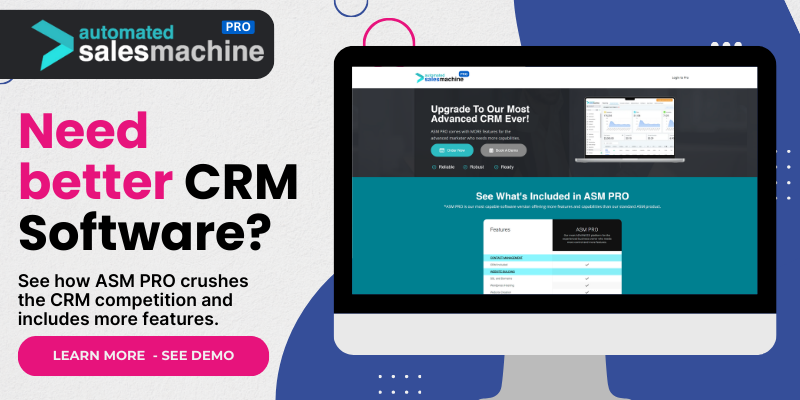1. Understanding Your Business Needs
Assessing Customer Interactions
Every business is unique, and understanding how you interact with your customers is key to making a decision about a CRM. Personally, I’ve found that mapping out my client interactions really lays out the foundation. Do you communicate via email, phone, or in person? Tracking these interactions can help you decide if a CRM like Sage Act is necessary.
Think about the volume of interactions too. If you’re juggling a high number of clients and touchpoints, a robust system can save you a heap of time. Sage Act offers tools that can help organize these interactions, but do you have the resources and desire to implement them?
Last but not least, don’t forget to include your team’s input. Their daily experience with customers can unveil what features are absolutely essential for your CRM to support, thus easing the decision-making process.
Staying Flexible with Growth
As your business evolves, so will your CRM needs. When I first started using Sage Act, I remember thinking, “Oh, this is perfect!” But then, as I scaled, I noticed certain functionalities that either weren’t there or required a bit of tweaking. Flexibility is crucial!
Ask yourself how the CRM adapts to your growing customer base or changing business model. Is Sage Act customizable? Will it integrate smoothly with new tools you might adopt down the line? These are questions to ask as you think about your future needs.
Don’t just think short-term; envision where you see the business in a few years and anticipate needs accordingly. It’s all about future-proofing your operations.
Efficiency in Processes
One of the major selling points of any CRM is its ability to streamline processes. As I began to implement Sage Act, my primary focus was on workflow efficiency. The idea was to minimize the time I spent on mundane tasks and concentrate on what really matters: serving the clients.
Before using Sage Act, my processes felt a bit like herding cats! After diving into the software, I noticed how automation features like reminders, follow-ups, and reports lifted a huge burden off my shoulders. If efficiency is a game-changer for you, that’s something to seriously consider with this CRM.
Check where the bottlenecks are in your current process. If Sage Act can bridge those gaps and enhance productivity, then it might just be the right choice for you!
2. Evaluating Costs
Initial Investment versus Long-Term Gains
When it comes to any software, two words come to mind: cost and value. The initial investment in Sage Act might feel hefty, but I like to consider the long-term benefits and ROI it could bring. I found that the moment you start to harness its full potential, you see returns through efficiency and sales growth.
Take a close look at your budget. Can you absorb the initial costs while still reaping those long-term rewards? Sometimes, being cautious can lead you to miss out on an amazing opportunity that pays off in the future.
Make sure to weigh the potential income against the software’s price tag. If the two can align closely, then Sage Act could be a solid investment!
Hidden Costs
Now, let’s keep it real—watch out for those pesky hidden costs! Implementation fees, training expenses, or ongoing maintenance can sometimes sneak up on you. My personal experience taught me to dig deeper into what’s included in the price that’s initially quoted.
Also, consider the learning curve! If your team needs extensive training, that could also translate to lost productivity during onboarding. Factor these expenses into your budget—it helps paint a more complete picture.
Always, and I mean always, read the fine print. Cost shouldn’t just be about the purchase price but rather a comprehensive view of your investment over time.
Comparing with Competitors
If you’re serious about making a wise investment, it’s crucial to check out the competition while evaluating costs. It’s so easy to get caught up in the appeal of one software, but trust me, you’ll thank yourself later for considering other options!
When I compared Sage Act with other options, I noticed some offers that were lower in price but didn’t provide the features I needed. Scout around—some might have better support, integration capabilities, or even a more user-friendly interface, all at a lower price point.
Additionally, identifying how different CRMs stack up against Sage Act on pricing plans can lead to making a more informed decision. Knowledge is power, so take the time to gather insights and make a thorough comparison.
3. User Experience and Support
Interface Clarity
Let’s talk about user experience. I can’t stress how important it is that any software you choose—especially a CRM—has a clear and intuitive interface. Sage Act has a lot of bells and whistles, but it’s crucial that you can navigate through it easily.
Distractions caused by a clunky interface can reduce productivity. Believe me, when you’re juggling multiple tasks, an easy-to-use interface will save you countless time on frustrating searches.
Take it for a test drive! Most providers offer trials, so give it a spin to see if you vibe with the interface. If it feels like a chore just to log in, you might want to look elsewhere.
Customer Support Accessibility
No matter how smooth-sailing things are, you’re bound to run into issues. Finding out how responsive a CRM’s support team is can make or break your experience. I’ve had my share of tech troubles and those stressful moments often lead back to customer service quality!
Check if Sage Act provides multiple support channels. Live chats, phone support, and extensive documentation create a safety net that can ease your transition and day-to-day use. The faster you can get help, the better you’ll feel about your investment.
Don’t forget to explore user forums or communities where you might find additional support from users just like you. Sometimes the best insights come from fellow customers!
Team Feedback
Engaging your team in the decision could save you a lot of headaches! After all, they’re the ones who will use the CRM every day. I always make it a point to gather feedback from staff when evaluating potential software. Their opinions can unveil potential pitfalls and also highlight features that’ll help them out in the long run.
Setting up team discussions around your CRM options not only helps you gauge buy-in but also promotes a collaborative atmosphere. You may uncover needs or preferences that you hadn’t initially thought about.
Implementing a new system should feel like a team effort, so take their feedback seriously when considering whether Sage Act is the right fit.
4. Integration with Existing Platforms
Analyzing Current Systems
In today’s tech-heavy landscape, chances are you’re using multiple platforms. Before you jump into Sage Act, it’s essential to analyze how it will connect with your existing tools. There’s no point in adding a layer of complexity if integrations don’t align.
Do you use certain marketing tools, accounting software, or any specific industry-related applications? If it’s tough for Sage to plug into these systems, it’s going to lead to inefficiencies that can negate the value it offers.
So, map out how Sage Act integrates or if you’ll need to invest in additional tools to facilitate interoperability. It can be the difference between success and a frustrating transition.
Third-Party Tools
While Sage Act brings a lot to the table, let’s be honest—sometimes you have to rely on third-party tools to fill in the gaps. Ensure that there are plugins or extensions available that can enhance the experience. For me, discovering those add-ons that seamlessly integrate into my workflows helped me maximize capabilities.
Consider what your crucial third-party applications are and whether Sage Act can integrate with them. Compatibility is key for a unified experience across your tools!
Again, check reviews or community feedback on integrations to gain insights on user experiences. This step is essential to avoid future headaches!
Scalability of Integrations
Just like growth is essential for your business, so is scalability with your integrations. When considering Sage Act, think about its potential to grow alongside your tech stack! You want those integrations to evolve with your business and not become outdated.
As your customer base or service offerings expand, knowing the CRM can adapt its integrations keeps things flexible. It’s smart to ask what future integrations are in the pipeline or if the developers listen to user feedback for improvements.
Staying ahead means ensuring you’re not stuck in tech-limbo. Keeping an eye on integration scalability is a wise move during your evaluation process.
5. Long-Term Commitment
Plan for Ongoing Maintenance
Jumping into a CRM like Sage Act can feel like a giant leap, but don’t forget that it’s a long-term commitment filled with responsibilities. Understanding what ongoing maintenance looks like, including cost and resources, is critical.
Taking the time to familiarize yourself and your team with the platform, updates, and maintaining data accuracy will take work. It’s not just about the shiny software; it’s about ensuring it works well day in and day out.
Plan for regular check-ins, updates, and training. The more invested you are, the greater the payoff will be in the long run!
Commitment to Training and Culture Change
No matter how awesome the software, convincing your team to embrace it often requires a cultural shift. I learned the hard way that even the best tools can flop if the team isn’t onboard. Taking active steps to advocate for Sage Act within your team can lead to greater adoption and success.
Be prepared to invest time in training sessions and promote continual education around the CRM. Your team should feel empowered to use the software to its fullest potential.
Creating a culture that embraces change and continuous learning will undoubtedly pay off, both in productivity and morale.
Assessing Longevity
Lastly, consider the longevity of not just Sage Act but your own business objectives too. It’s essential to ask if this CRM will still align with your goals in the years to come. Have my needs changed significantly since my initial purchase? Absolutely!
You want a CRM that can pivot along with your business changes, maintaining its relevance and effectiveness over time. Consider if there is an upgrade path that allows Sage Act to remain in step with your growth and strategy shifts.
Ultimately, ensuring that your CRM aligns with your vision can lead to a seamless transition, and long-term success—as well as a more peaceful work life!
Frequently Asked Questions
1. How do I determine if Sage Act is suitable for my business size?
Evaluating your business size and needs is crucial. Consider your client volume, interaction methods, and future growth plans. A trial can also help gauge if it meets your requirements.
2. What are the essential features I’ll need from a CRM like Sage Act?
Some core features to look for include contact management, integration capabilities, reporting, and automation tools. Ensure these align with your workflow to maximize effectiveness.
3. Can I integrate Sage Act with my existing tools?
Yes, integration with existing tools is possible. However, it’s essential to check which tools are supported and assess whether they meet your ongoing operational needs.
4. What is the expected ROI of implementing Sage Act?
The ROI can vary based on how you harness the system. By streamlining processes and improving customer interactions, businesses often see increased sales and efficiencies leading to noticeable returns.
5. How can I get my team on board with using Sage Act?
Involve your team in the decision-making process and provide comprehensive training. Emphasizing how Sage Act can make their tasks easier helps foster buy-in from the get-go.

